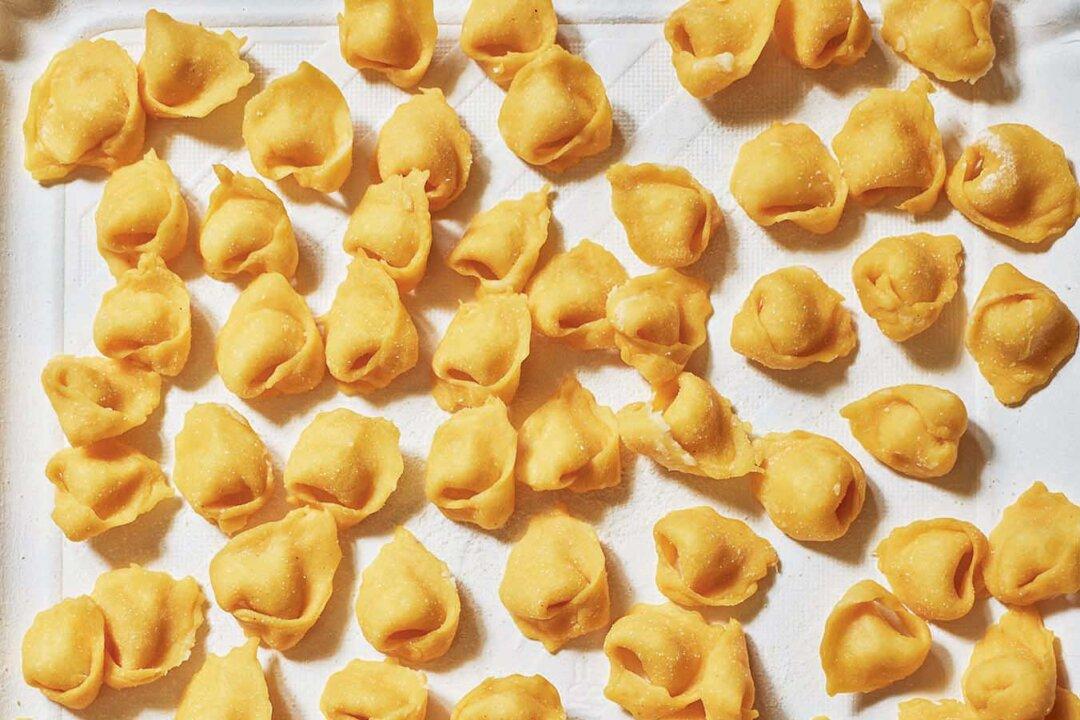The nonna way is to decide on how many eggs you are going to use, and use one handful of flour for every egg. This handful equates to 3 1/2 ounces of flour per egg.
Step 1: Weigh Out Your Ingredients
Allow 3 1/2 ounces 00 flour (or plain/all-purpose flour) per person for a main course-sized portion. You need 2 ounces egg without its shell for every 3 1/2 ounces flour.For example, if you are making pasta for four people, you will need 14 ounces (3 1/3 cups) flour and 7 3/4 ounces egg, which most of the time will mean four hen eggs. But weighing out your ingredients means you can also use other eggs, such as duck or turkey, which is something the nonne do—Velia regularly uses turkey eggs, as that is what she has running around her backyard.






